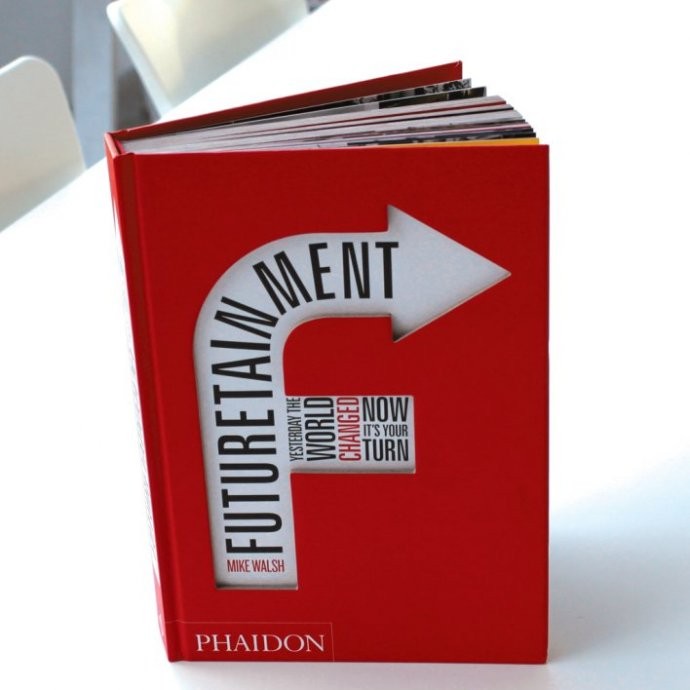First Published in

Futuretainment by Mike Walsh is a look at the world’s continuously changing technological landscape and the increased connectivity that has allowed for daily entertainment such as music, newspapers, magazines – almost everything – to be globally accessible to just about everyone. Networks are no longer direct and fixed as before, they are crossed, perpetually shifting between people and places making the generic concept of an audience redundant. Walsh documents how the age of broadcast networks has passed, and audience networks formed on Facebook and Twitter are becoming more than just social entertainment. These networks have become the new channels of media content distribution, allowing it to be discovered, shared and popularised instantaneously.
Written by a leading authority on consumer innovation and the digital future, Walsh is the CEO of the innovation research agency Tomorrow and has been the leading force in helping some of the world’s top companies and brands embrace new ideas. He has devoted his career to being digital, and with every speech he gives and book he publishes, he ensures that industries are pushed in the right direction of a brighter and more hi-tech future.
The award-winning Vince Frost and design director Quan Payne directed the visuals that give Futuretainment the edge over the plethora of books dealing with the technological age. Using a graphic style that is a parody of 1950s design, Wallpaper magazine named Futuretainment “one of the design masterpieces of 2008” before it was even published by Phaidon Press. Well I wouldn’t exactly call it a masterpiece; the graphic element does add a certain pop feel to the book that makes it more engaging and stimulating.
To be honest, I don’t particularly enjoy graphics in books or, at the very least, copious amounts of them. More often than not, the book looks like a child’s picture book and the graphics tend to skew the message of what is trying to be conveyed. Unless done right, it begins feeling as if the author has relied too much on the visual and so any text just falls to the wayside and becomes irrelevant. Futuretainment doesn’t necessarily reach a perfect balance, but it’s done well enough that you don’t feel like a four-year old.
Futuretainment by Mike Walsh is a look at the world’s continuously changing technological landscape and the increased connectivity that has allowed for daily entertainment such as music, newspapers, magazines – almost everything – to be globally accessible to just about everyone. Networks are no longer direct and fixed as before, they are crossed, perpetually shifting between people and places making the generic concept of an audience redundant. Walsh documents how the age of broadcast networks has passed, and audience networks formed on Facebook and Twitter are becoming more than just social entertainment. These networks have become the new channels of media content distribution, allowing it to be discovered, shared and popularised instantaneously.
Written by a leading authority on consumer innovation and the digital future, Walsh is the CEO of the innovation research agency Tomorrow and has been the leading force in helping some of the world’s top companies and brands embrace new ideas. He has devoted his career to being digital, and with every speech he gives and book he publishes, he ensures that industries are pushed in the right direction of a brighter and more hi-tech future.
The award-winning Vince Frost and design director Quan Payne directed the visuals that give Futuretainment the edge over the plethora of books dealing with the technological age. Using a graphic style that is a parody of 1950s design, Wallpaper magazine named Futuretainment “one of the design masterpieces of 2008” before it was even published by Phaidon Press. Well I wouldn’t exactly call it a masterpiece; the graphic element does add a certain pop feel to the book that makes it more engaging and stimulating.
To be honest, I don’t particularly enjoy graphics in books or, at the very least, copious amounts of them. More often than not, the book looks like a child’s picture book and the graphics tend to skew the message of what is trying to be conveyed. Unless done right, it begins feeling as if the author has relied too much on the visual and so any text just falls to the wayside and becomes irrelevant. Futuretainment doesn’t necessarily reach a perfect balance, but it’s done well enough that you don’t feel like a four-year old.








